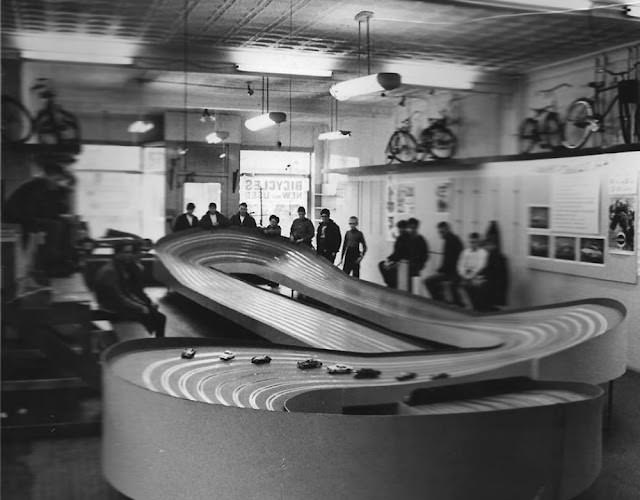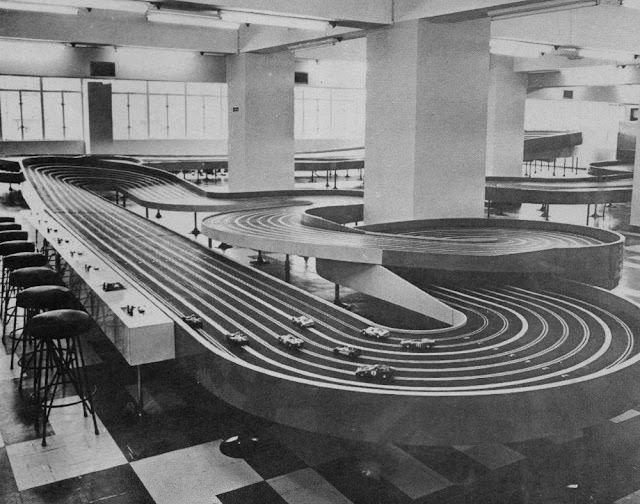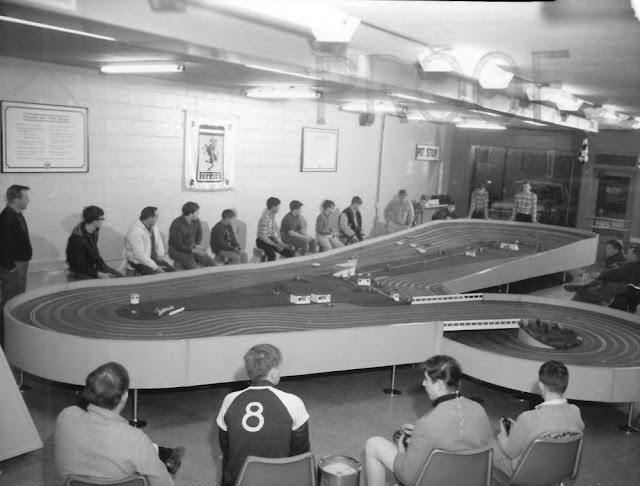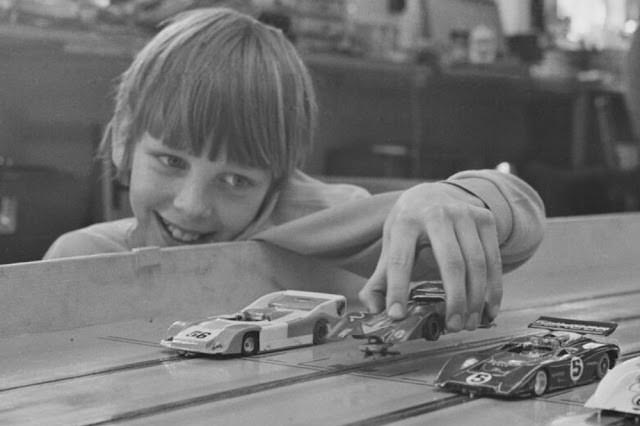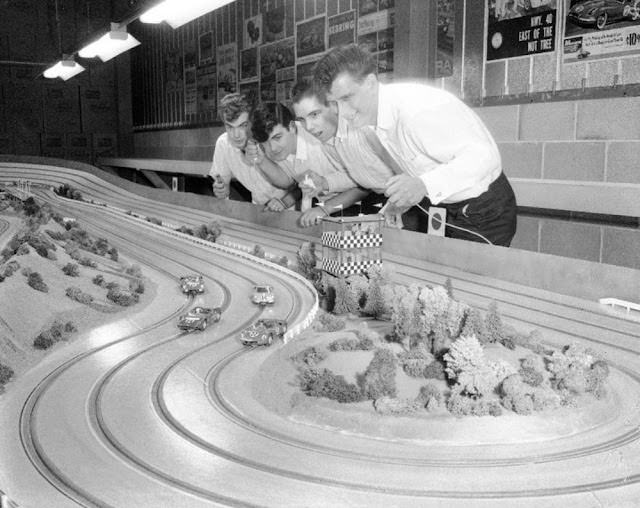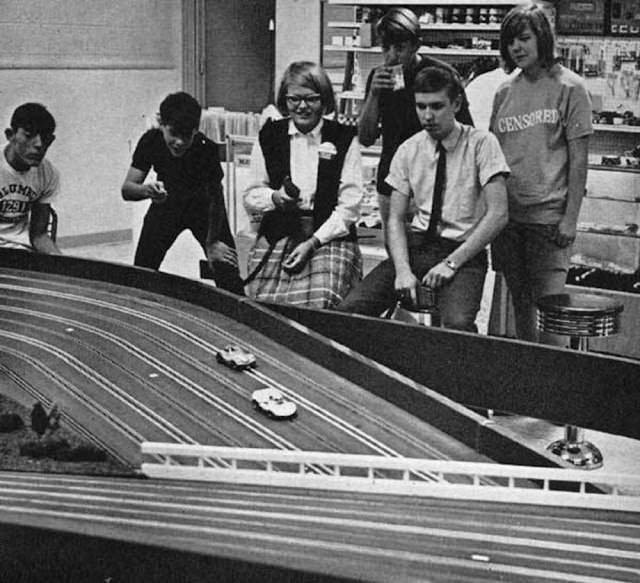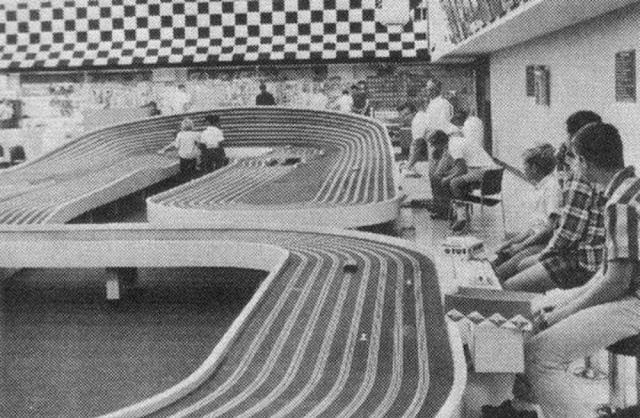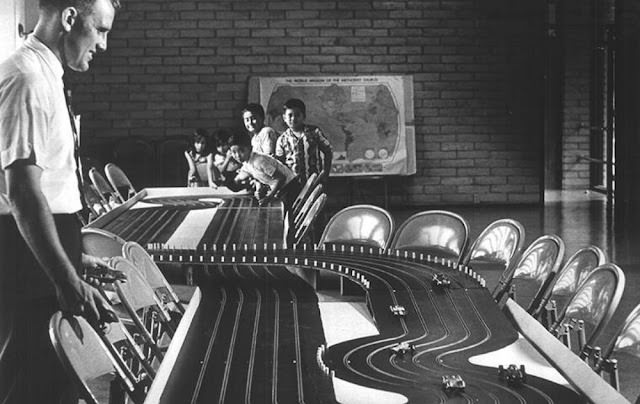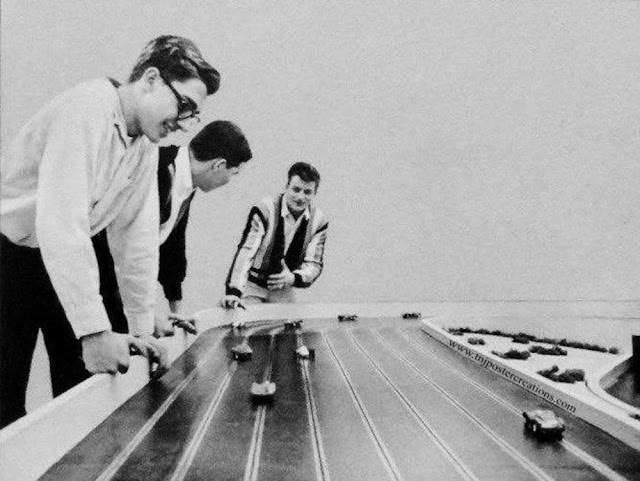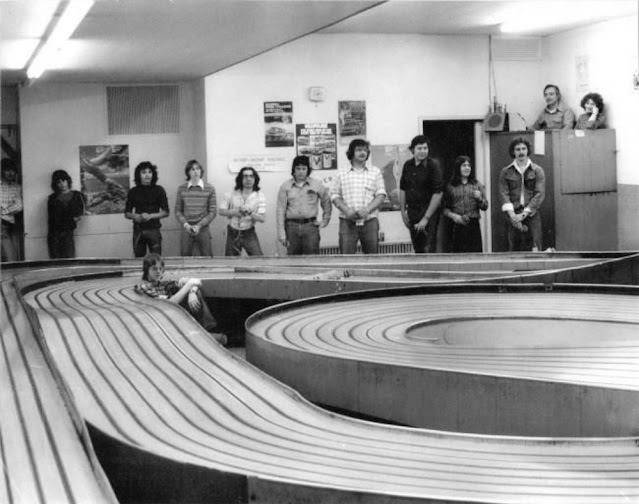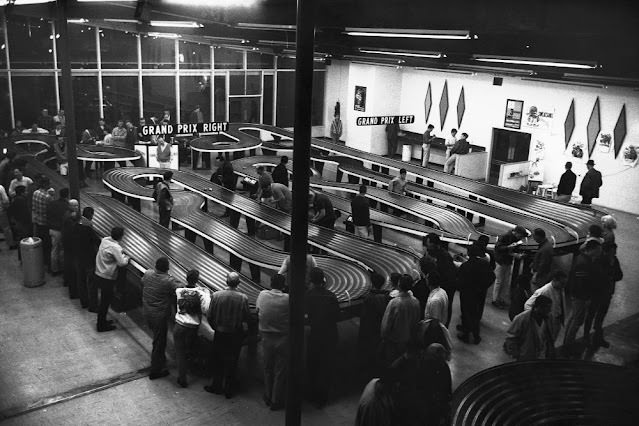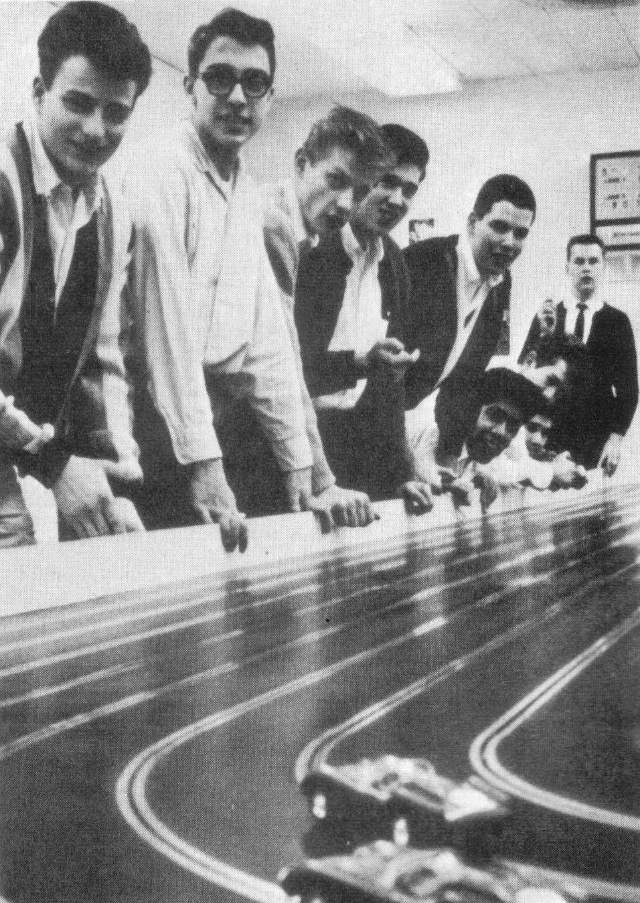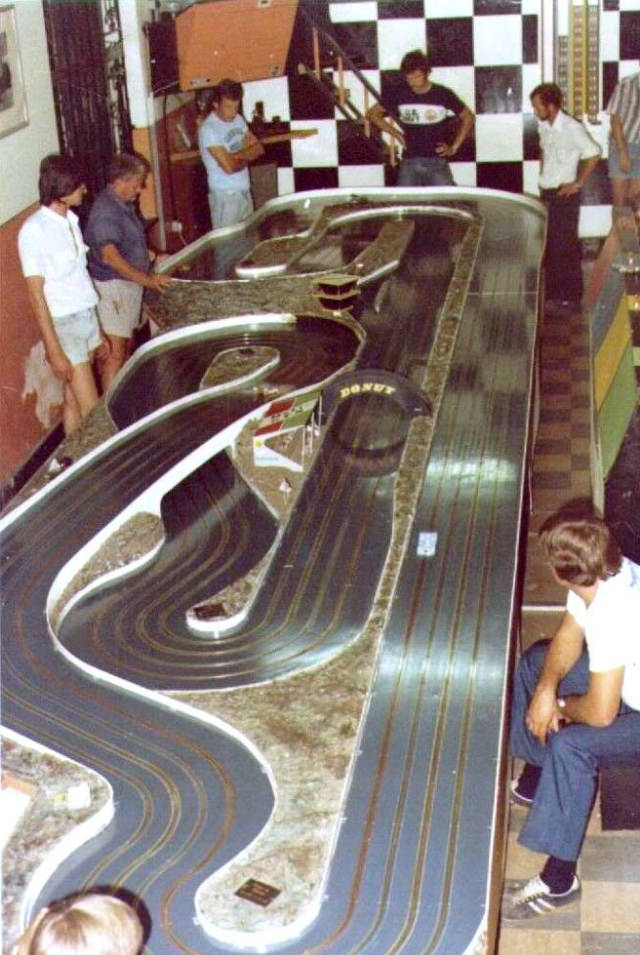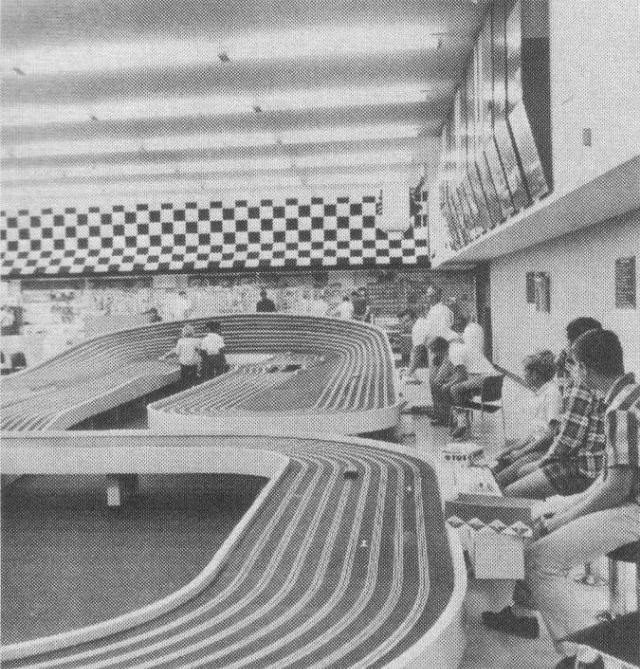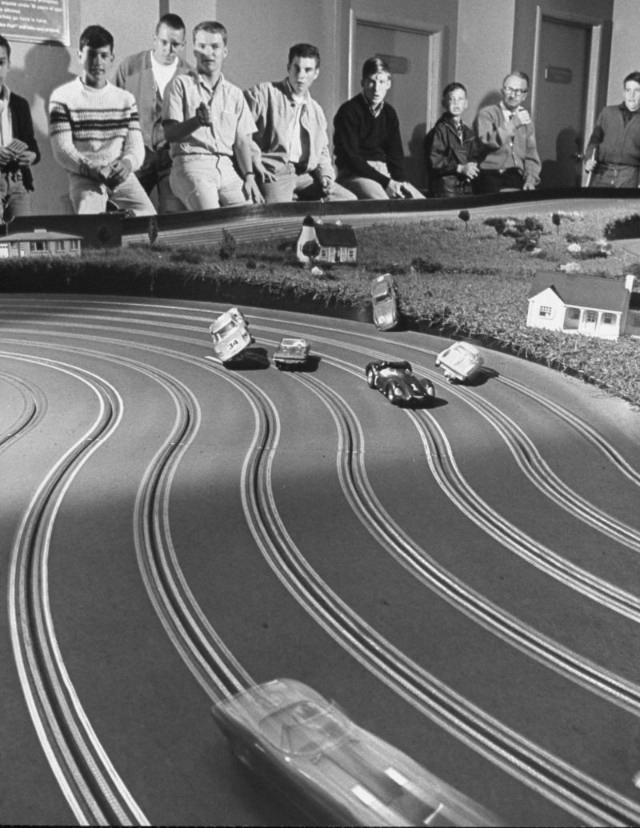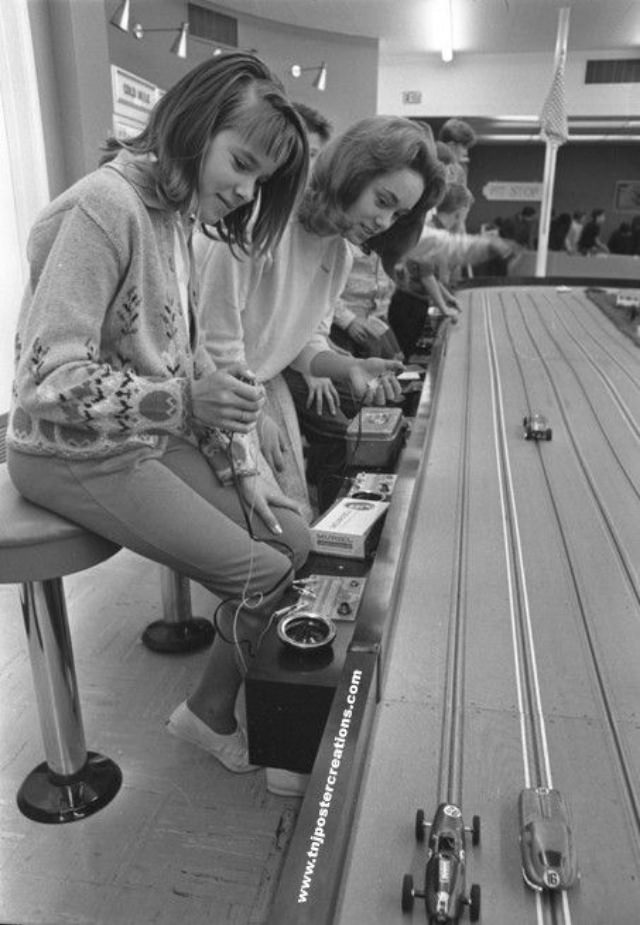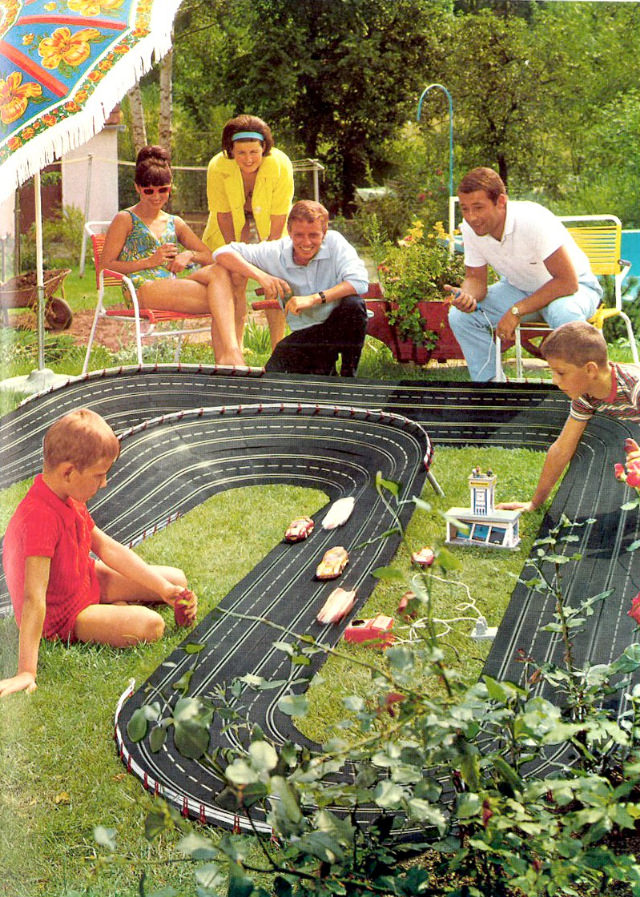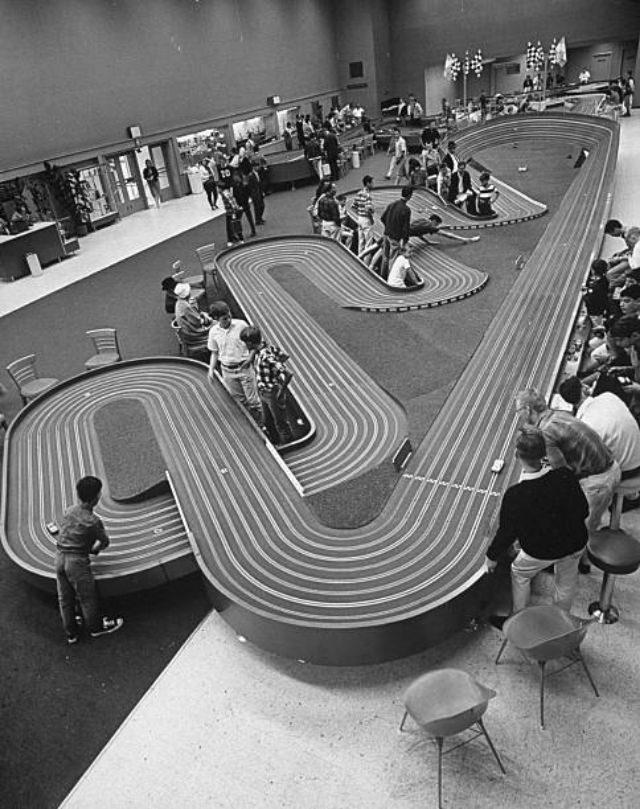In a time before the buzz of Mario Kart and Need for Speed filled living rooms around the world, slot car racing was the go-to activity for adrenaline-seeking kids and hobbyists alike. Often a blend of engineering ingenuity and pure child-like joy, this electrifying pastime took America by storm in the 1960s.
The roots of slot car racing can be traced back to the early 1900s. However, the hobby didn’t gain significant traction until the 1950s, when British entrepreneurs began electrifying tracks and creating scale-model cars to race on them. By the time this new-and-improved slot car racing system made its way to the United States, it was primed for massive success.
The Boom of the 1960s
By the mid-1960s, slot car racing had become a phenomenon. The numbers were staggering: over 3,000 public race tracks existed in the United States, hosting regular races that drew crowds of enthusiastic kids and teenagers. Industry giants like Scalextric, Revell, Aurora, Carrera, and Tyco were collectively selling $500 million worth of cars and equipment annually. This was no minor trend; it was a craze that had seized the nation.
The appeal of slot car racing lay not just in the competitive spirit it evoked, but also in its accessibility. With only a few dollars in hand, kids could spend hours at tracks, racing against friends and sharpening their skills. The cars themselves were marvels of miniature engineering, with the details and contours carefully crafted to mimic their full-scale counterparts.
The Challenges and the Decline
However, running a slot car track was not as straightforward as it seemed. The facilities required considerable space and maintenance. Electricity costs, track upkeep, and the constant need for new cars and parts could add up quickly. As the fad reached its peak and began to subside, businesses found it increasingly difficult to remain profitable. They were struggling to justify the real estate they occupied, particularly when their primary audience was youngsters who could pay only a small amount for hours of racing.
The decline was swift. By the early 1970s, many of these centers began to close down, suffering the same fate as other entertainment facilities like ice-skating rinks, bowling alleys, and miniature golf courses that also required large real estate footprints. By 1975, fewer than 200 tracks remained in operation, and over the subsequent years, most of those closed as well.
Slot Cars vs. Video Games
Fast-forward to today, digital technology has given rise to an entire genre of racing video games. Yet, it’s worth noting that the physical, tactile joy of slot car racing offers something that even the most advanced simulations can’t replicate. The scent of electricity in the air, the tactile feedback of the controller, and the camaraderie among racers around a physical track are experiences that live on in the memories of those who were there during its heyday.


